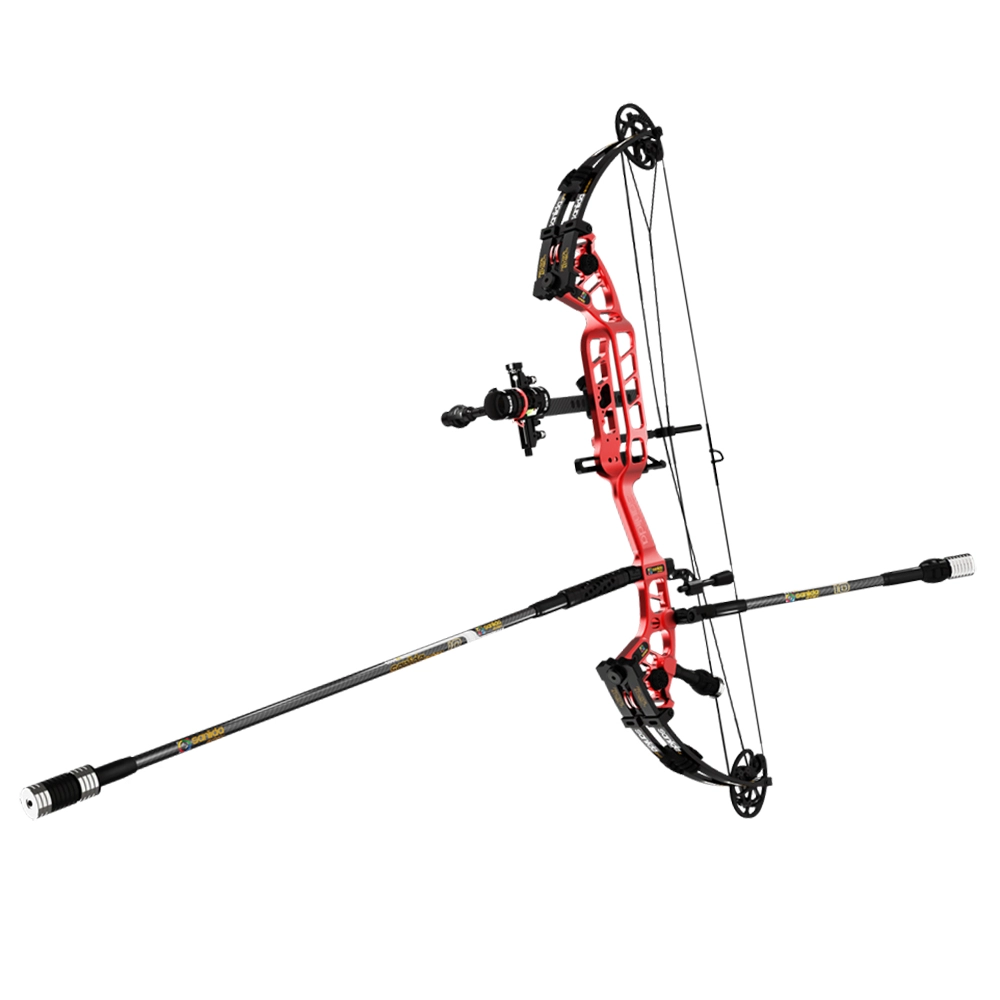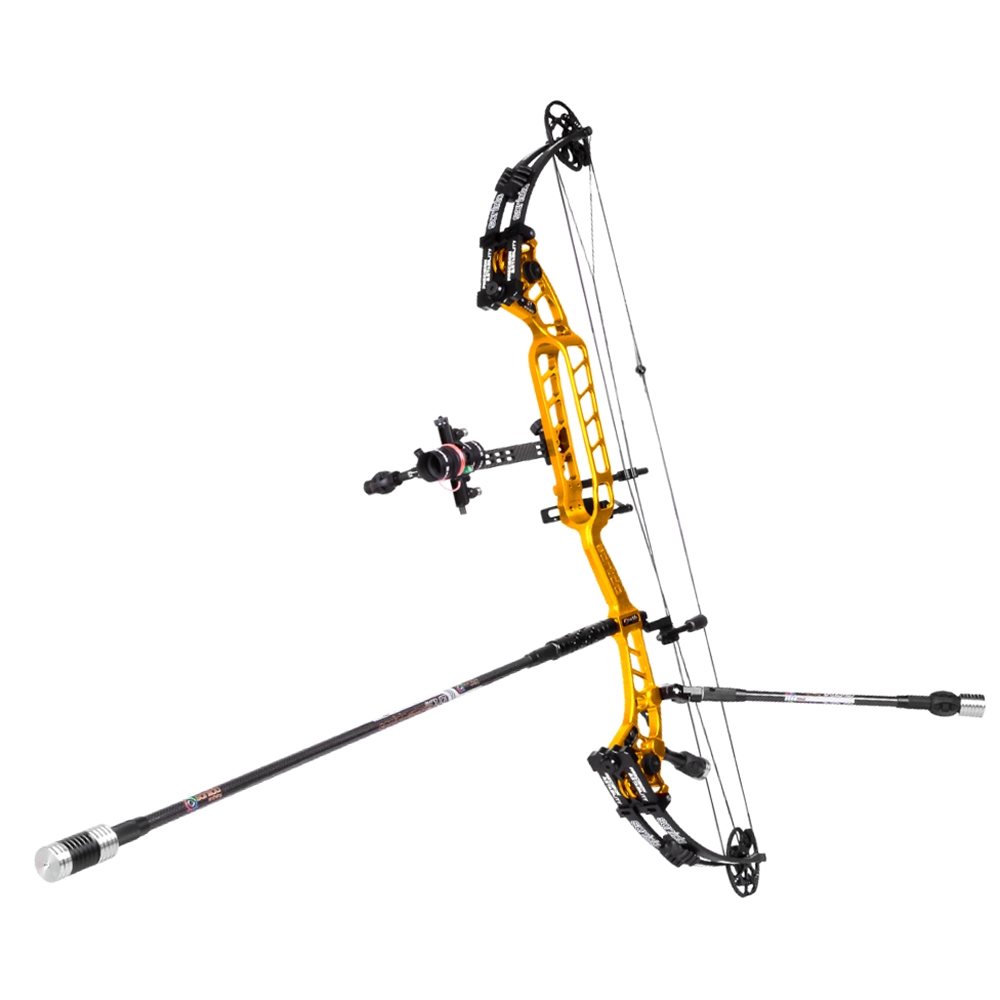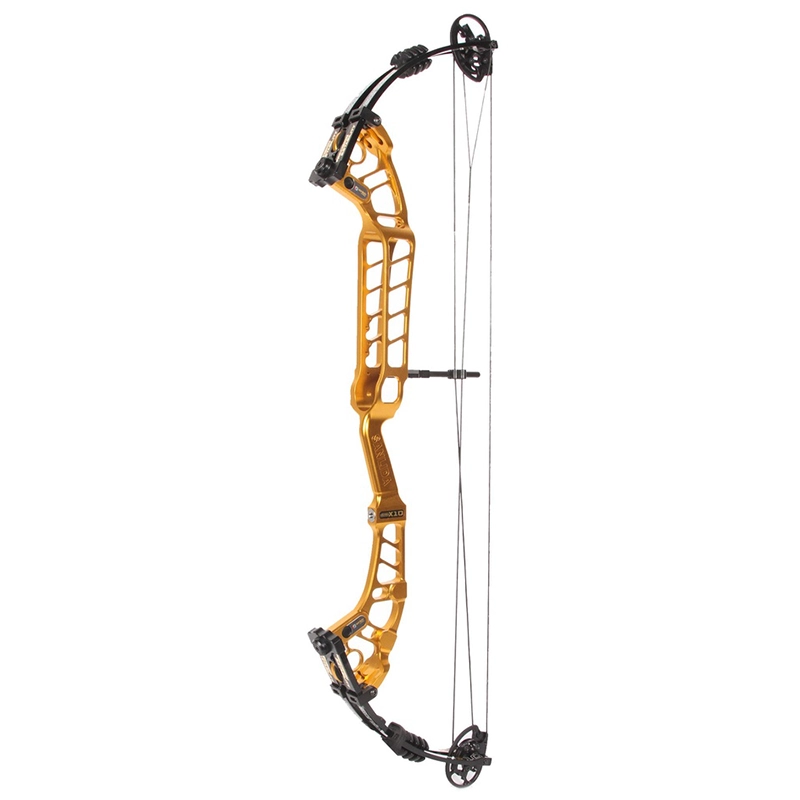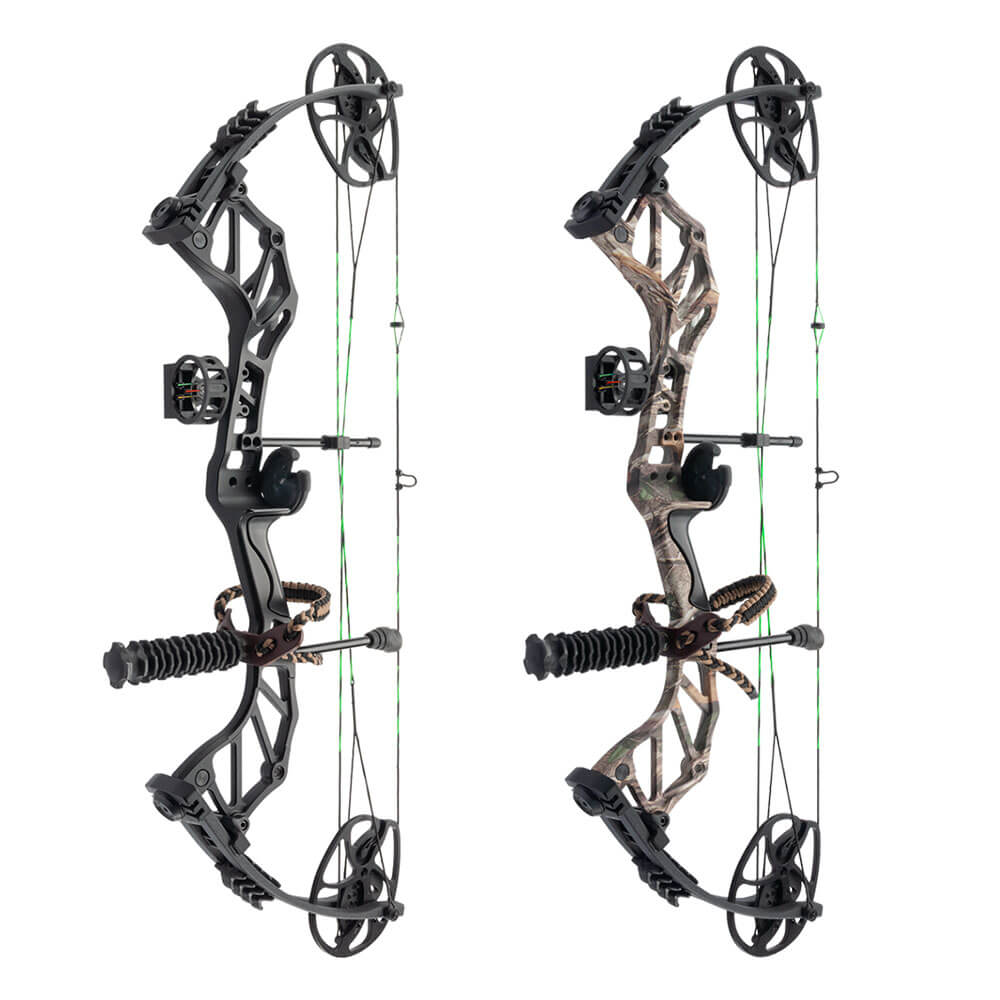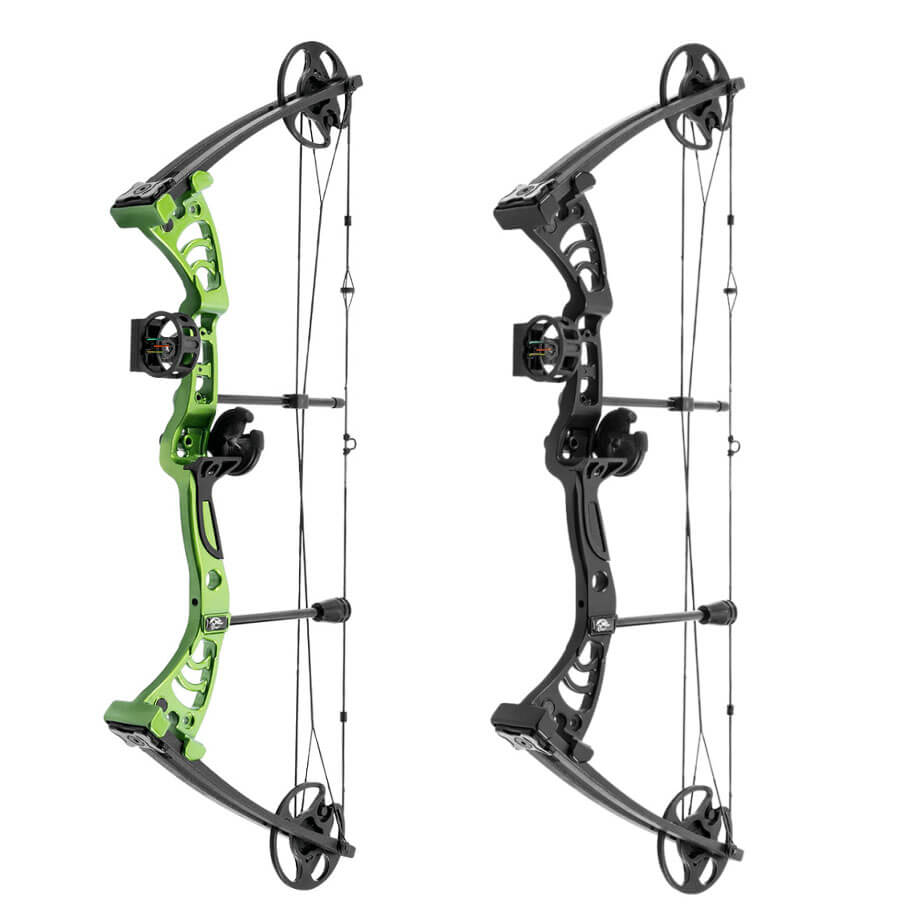Compound Bows
The compound bow was invented in the 1960s as a more mechanically efficient piece of archery equipment. The design uses a levering system of pulleys and cables, making it faster and more accurate than other types of bow. An archer shooting a compound bow pulls the string back to the mechanical stop, using a release. The strength required to draw the bow decreasing as the bow is drawn. The archer aims at the target through a magnified scope and activates his release to shot the arrow. The energy stored in the bent limbs and taught cables transfers into the arrow and sending it downrange to the target. Drawing a competitive compound bow can require up to 70 pounds of force. At full draw the holding weight can be as little as 20 pounds, and an arrow shot from a compound bow can travel at speeds of over 360feet per second.
Modern compound bows are built using technologically advanced materials, including carbon fibre and aluminium. The equipment is rigorously tested, as compound bows remain under significant tension, even when not in use, and must withstand remarkable forces when shot.




